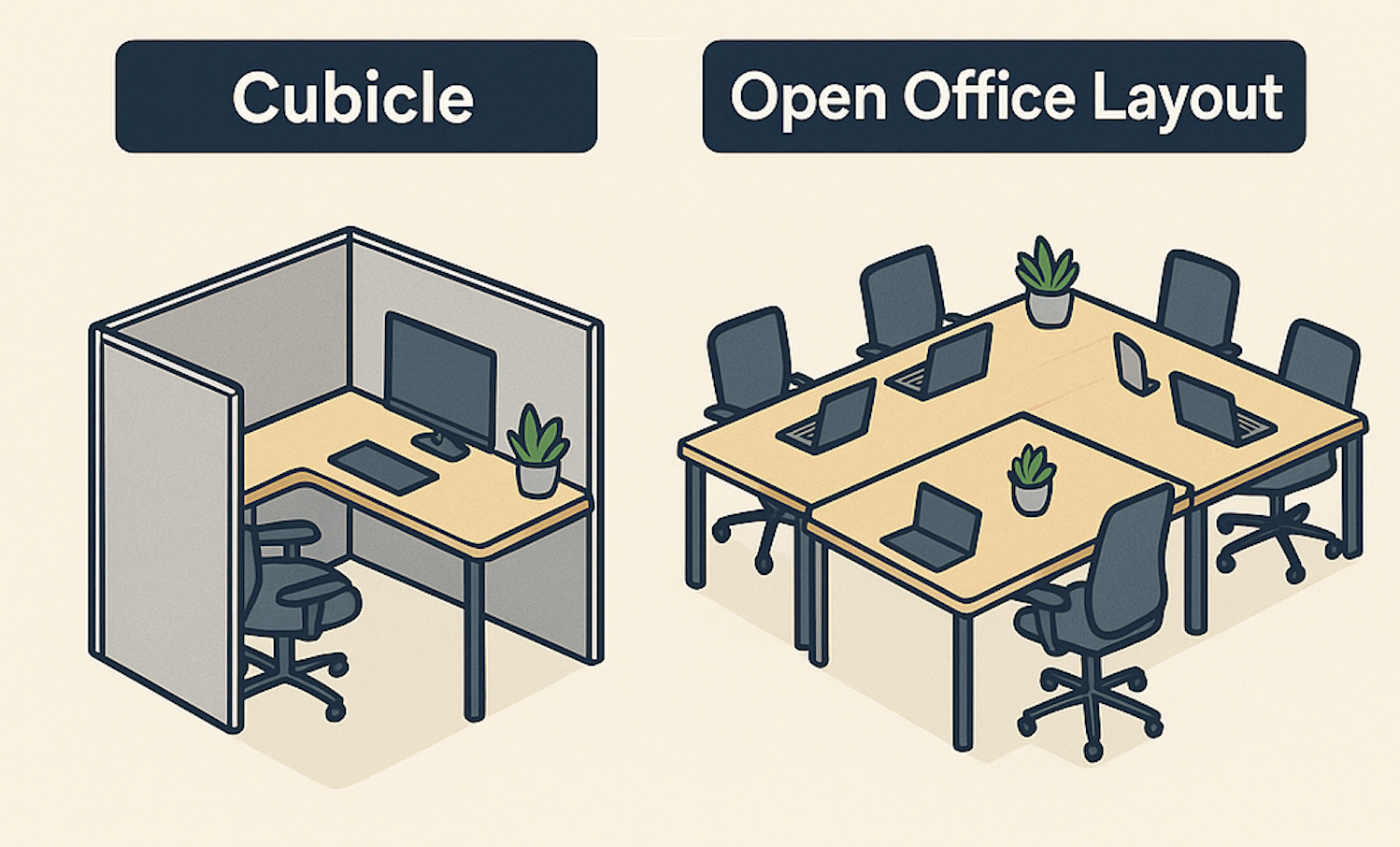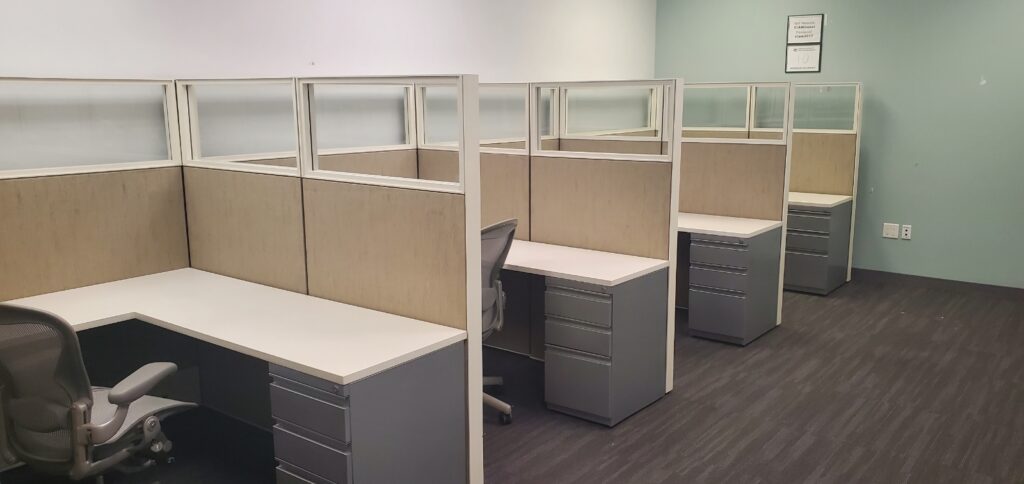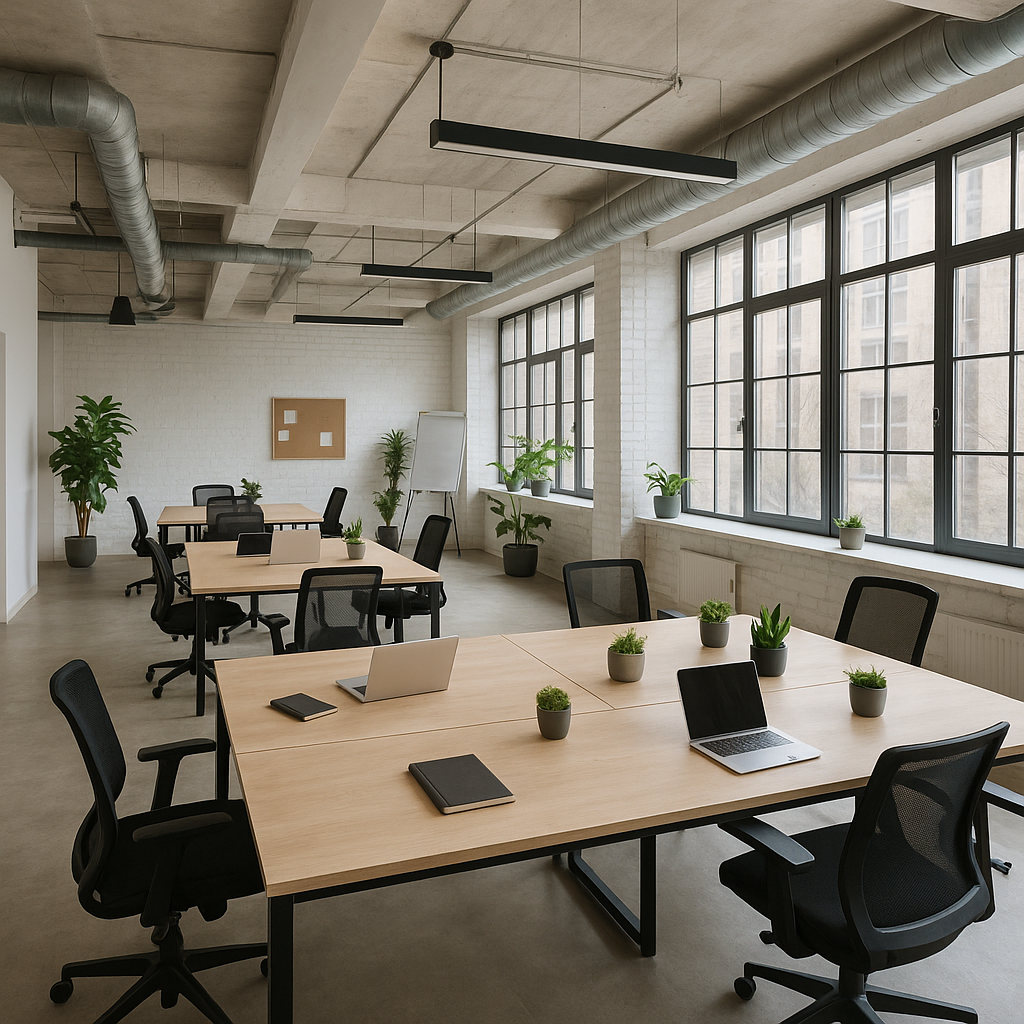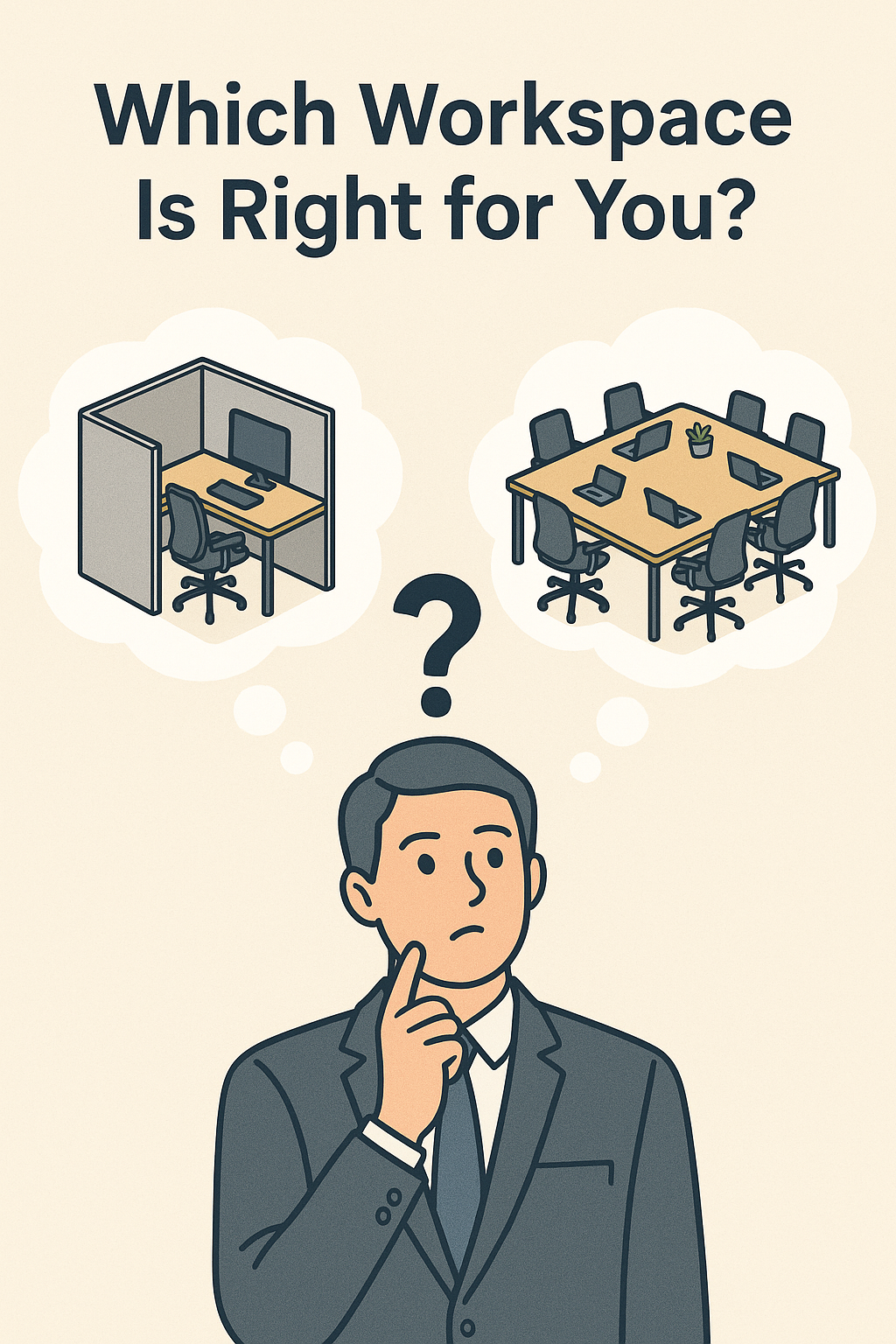
Choosing the right workspace design is more than just an aesthetic decision—it’s about productivity, morale, and operational efficiency. When setting up or redesigning an office, companies often debate between two popular options: the traditional cubicle setup and the modern open office layout. Each has its own set of advantages and drawbacks. In this article, we’ll break down the key differences, helping you determine which workspace best suits your business goals and team dynamics.
What Is a Cubicle Workspace?

A cubicle workspace consists of partitioned sections that provide semi-private spaces for employees. These partitions are usually chest or head-high and can vary in design, from simple panels to fully enclosed modules with desks, storage, and task lighting. The cubicle became a staple of the corporate world in the late 20th century, praised for maximizing space while offering a degree of privacy.
What Is an Open Office Workspace?

An open office workspace removes physical barriers between employees. Desks are typically arranged in rows or clusters, and the overall layout encourages spontaneous collaboration. The idea gained traction in startups and tech companies, promoting transparency and flatter hierarchies. Open offices are often associated with modern design and company culture centered around innovation and teamwork.
Pros of a Cubicle Workspace
1. Increased Focus: The semi-private setup of a cubicle workspace minimizes distractions and helps employees concentrate on deep work tasks.
2. Noise Reduction: The partition walls absorb sound, making cubicles a better environment for phone calls or sensitive work.
3. Personalization: Employees can personalize their own workspace with photos, plants, or productivity tools, fostering a sense of ownership.
4. Visual Privacy: Cubicles offer more visual separation, which can be critical for teams handling confidential data or requiring discretion.
Cons of a Cubicle Workspace
1. Isolation: Employees may feel disconnected from their teammates, leading to communication silos.
2. Less Collaboration: Physical barriers can inhibit spontaneous conversation and team synergy.
3. Higher Costs: Building and maintaining cubicle systems generally costs more than simple open layouts.
4. Dated Aesthetics: Some see cubicles as a relic of a less dynamic, less engaging corporate culture.
Pros of an Open Office Workspace
1. Enhanced Collaboration: An open workspace naturally promotes interaction and teamwork among employees.
2. Flexible Use of Space: Open layouts are easier to modify, making them ideal for growing companies or changing team structures.
3. Cost-Efficiency: With fewer construction materials and partitions, open offices often save on setup and maintenance costs.
4. Modern Look and Feel: Open offices support a contemporary aesthetic that appeals to younger, dynamic talent.
Cons of an Open Office Workspace
1. Distractions and Noise: Without physical barriers, employees are more susceptible to noise and interruptions.
2. Lack of Privacy: Sensitive conversations and private work can be difficult to conduct in a shared workspace.
3. Decreased Productivity: Studies have shown that constant distractions can lead to lower individual performance.
4. Higher Stress Levels: Some employees report feeling overwhelmed by the constant buzz and exposure of open layouts.
Which Workspace Is Right for You?

The best workspace solution depends on your team’s needs, company culture, and the nature of your work. If your organization prioritizes focused, independent work—especially in fields like law, finance, or IT—a cubicle setup might be the better fit. On the other hand, creative industries like marketing, design, or tech startups may thrive in an open layout that facilitates idea-sharing and agile collaboration.
Many companies today are opting for a hybrid model: designated quiet areas with cubicles or pods, combined with open zones for meetings and brainstorming sessions. This approach allows employees to choose the right workspace based on their tasks and working style.
Final Thoughts
The choice between a cubicle and an open office workspace isn’t one-size-fits-all. Understanding the pros and cons of each will help you make a strategic decision aligned with your goals and team preferences. Whether you’re remodeling your current office or planning a brand-new space, always put employee productivity and well-being at the center of your workspace strategy.
Still unsure which workspace layout is best for your team? Contact our design experts at Cube World USA—we specialize in customizing office layouts to suit every business size and culture.

